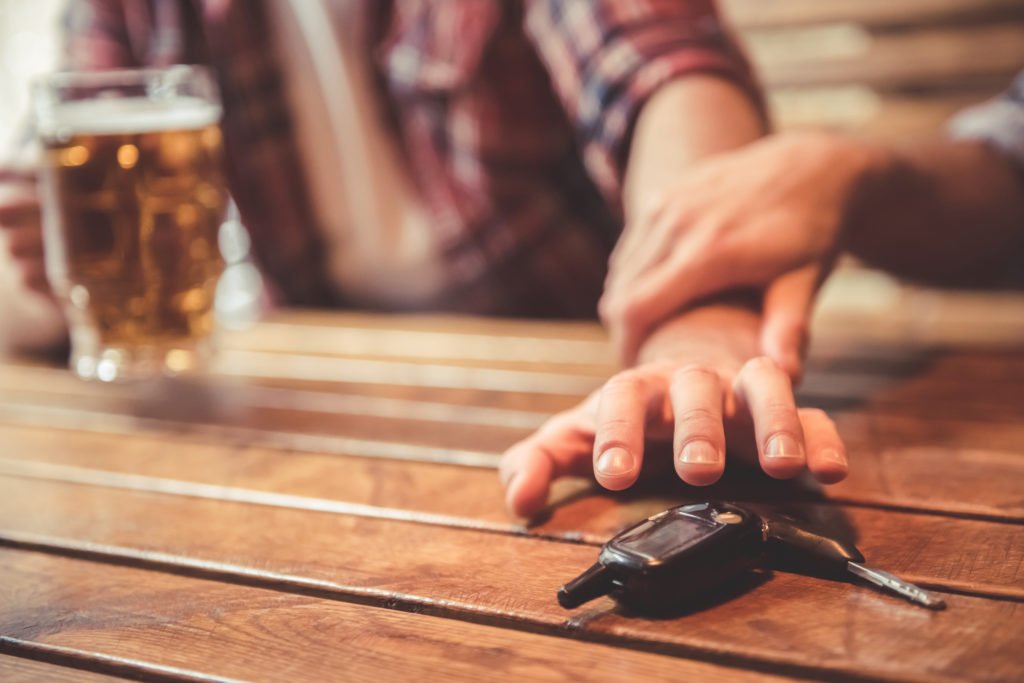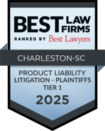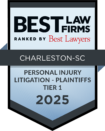
As temperatures begin to drop across South Carolina from Clinton and Columbia to Charleston and Myrtle Beach, the probability increases of hazardous road conditions and weather-related car accidents.
Traditionally, South Carolina doesn’t get much snow. However, the January 3, 2018 storm that dropped 3 to 5 inches of snow across Charleston and other southeastern SC counties reminded us that South Carolinians do have to cope with winter weather. That storm caused more than 650 reported traffic accidents, three fatal crashes investigated as weather-related and at least 20 car accident injuries and 17 slip-and-fall accident injuries requiring hospital visits, according to The Post and Courier.
With cold weather and wintry precipitation on the way, now is a good time to review tips for driving safely in inclement weather conditions.
What to Do When Driving on Ice
The problem with driving on icy roads is that it is very easy for your car’s tires to lose traction and for you to lose control of your vehicle. Your tires could spin on an ice-covered roadway and leave you stuck in place or sliding out of control, or just one tire could spin on the ice and send your vehicle into a skid.
If the forecast is for freezing rain or a hard freeze after a snowfall has begun to melt, it is best to stay off the roads. If you can’t avoid driving in icy conditions, do so slowly and steadily.
In most instances, a driver will suddenly encounter a patch of icy road. You should be driving some 10 mph slower than usual if you are driving in icy conditions. If you hit ice and feel your vehicle lose traction, ease up on the accelerator. You want your car’s momentum to carry you across the ice.
Driving on Black Ice Can Be Dangerous
Black ice is different only because it is clear ice that blends in with the typically black color of the road. This makes it a hidden hazard that tends to surprise drivers, causing loss of vehicle control that leads to wrecks.
 Black ice forms after rain freezes or melted snow refreezes, often at night. It’s most common in areas that do not warm up enough in the daylight to dry, or where runoff water collects. This includes bridges and elevated ramps, which are surrounded by cold air; underpasses, which remain in the shadows of bridges; the outside lanes of multi-lane roads, because roadways slope toward their shoulders; and at the bottoms of hills.
Black ice forms after rain freezes or melted snow refreezes, often at night. It’s most common in areas that do not warm up enough in the daylight to dry, or where runoff water collects. This includes bridges and elevated ramps, which are surrounded by cold air; underpasses, which remain in the shadows of bridges; the outside lanes of multi-lane roads, because roadways slope toward their shoulders; and at the bottoms of hills.
Slow down when approaching areas where black ice is likely to form. During the day, ice on the road may reflect the sun. At night, it may reflect headlights. If the tires of the cars ahead of you suddenly quit spraying water, they may be on ice.
How to Drive in the Snow
If you must drive in the snow, you want to do so at a slow and steady pace. Keep as far from other vehicles as you can. The objective is to avoid sliding and to avoid other vehicles if they slide.
Slow down by at least 10 mph on snow but keep a steady pace headed as straight as possible. To avoid sliding or skidding, be careful when braking and turning. When possible, ease off the accelerator to slow your vehicle instead of braking.
Allow more distance between your car and the cars ahead of you. You need more distance than usual to stop or slow down on roads made slick by snow. You also want room to react and slow or stop if the car ahead of you suddenly goes into a spin or stops unexpectedly.
If your car starts to skid, stop accelerating, but do not brake. Steer your car in the direction you want to go. If the skid continues and your car starts to spin around, steer gently into the skid, i.e., toward the end of the car coming around. This should counter the spin and, as it does so, straighten the wheels and accelerate slowly when you feel the tires grip the road.
Driving in Heavy Rain and Sleet
Heavy rain can fall at any time of the year. In the winter, it can change to sleet. Heavy rain and sleet create slippery roads and greatly reduce visibility. Once again, driving at a speed that is safe for the weather and road conditions is your first step toward increasing your safety.
When heavy rain falls, it can bring to the surface oil on the roads. This can make roads extremely slippery in the first half hour to an hour of heavy rain before this sheen washes away.
Heavy rains also cause puddling in low-lying areas, as well as on roads where the drainage ditches are overwhelmed by the sudden deluge. Steer clear of puddles.
If your car starts to hydroplane, which is essentially skating across built-up water, take your foot off the accelerator and steer gently in the direction you want to go. As your tires re-establish traction, accelerate gently.
Driving at Night in Inclement Weather
Rain at night decreases visibility and wet roads reflect the light from vehicles, streetlights, and commercial establishments to create glare. The dark of night can make it hard to see pooled water or to judge its depth. Many people, especially older adults, find it difficult to drive at night, particularly in rain and adverse weather conditions.
Avoid the “blindness” created by focusing on the middle of the area illuminated by your headlights or looking at other vehicles’ oncoming headlights. Your eyes will recognize images coming out of the dark better if you focus on the edges or outlines of objects instead of looking directly at them.
Use your headlights’ high beams in poorly lit rural areas. Remember to dim high beams for oncoming traffic or approaching cars. Check that your high beams are not reflecting off heavy rain, snow, or fog and making visibility worse. In very heavy fog, rain, or snow, turn on your hazard lights to make your vehicle more visible to others.
Keep an Emergency Kit in the Car
It’s a good idea to prepare an emergency kit for driving during the winter. Some of these items are a good idea to have at all times, but others are especially important when dealing with winter weather.
Organizations such as AAA and the Centers for Disease Control and Prevention suggest keeping the following items in your vehicle:
- A cell phone programmed with important numbers so you can call for help or let people know where you are when safely off the road. Make sure you have an in-car charger for your phone, too.
- A bag of kitty litter, sand, or salt to spread on the ground to gain traction in snowy or icy conditions.
- A snow shovel in case you need to dig out.
- An ice scraper with a brush to clear the car of ice and snow.
- A can of de-icer to help with ice on the car.
- Blankets and heavy clothing to stay warm, especially if you have to wait out a storm.
- Windshield wiper fluid to refill the reservoir since it might take more to keep the windshield clear. Make sure the fluid is formulated for winter so it won’t freeze.
- Chains or rope in case you get stuck.
- A flashlight with extra batteries to navigate in the dark.
- Drinking water and snacks in case the trip takes longer than planned or you can’t get to a restaurant or store.
- A first aid kit.
- Jumper cables in case your car’s battery dies or you need to help someone else.
- Emergency flares to draw attention if you are in an accident or have to pull over for another reason.
- Paper towels to take care of any messes.
- Compass and road maps. Your GPS might have trouble in bad weather or you may need to conserve your car or phone battery.
Make Sure Your Car is Ready for Winter Weather
Before you set out on the road, go to a trusted mechanic to get a seasonal checkup for your car. AAA recommends the following checklist:
- Battery – Replace the battery if it is weak. Test the electrical system, making sure connections are tight and terminals and cable ends are free from corrosion.
- Belts and hoses – Inspect belts and hoses for wear and tear and any possible leaking or fraying.
- Windshield wipers – Make sure your wiper blades are in good condition and clear the windshield with every swipe. Replace them if necessary. The washer fluid reservoir should be filled with a solution that includes anti-freezing components.
- Lights – Check that all lights and signals work and replace any burnt-out bulbs. Keep the lights clear of ice, snow, and salt spray.
- Tires – The tires on your car should have sufficient tread, and preferably be winter or all-season tires. Check the tire pressure to make sure they are inflated to the proper level. Cold weather makes tires lose air pressure.
- Brakes – Your brakes should stop smoothly and consistently. If they don’t, replace them.
- Heating system – Test to make sure the defroster, heater, and rear window defogger work properly. Don’t drive until you can see through all windows.
Contact Our South Carolina Car Accident Lawyers
 Car accidents during bad weather aren’t always caused by the weather itself. Many times, they happen because another driver didn’t take the necessary precautions that bad weather demands—like slowing down, keeping a safe following distance, or using headlights. If you were injured in a car accident caused by a driver who failed to exercise the proper level of caution inclement weather demands, they may be held legally responsible for your injuries and medical bills.
Car accidents during bad weather aren’t always caused by the weather itself. Many times, they happen because another driver didn’t take the necessary precautions that bad weather demands—like slowing down, keeping a safe following distance, or using headlights. If you were injured in a car accident caused by a driver who failed to exercise the proper level of caution inclement weather demands, they may be held legally responsible for your injuries and medical bills.
At Joye Law Firm, we understand how overwhelming it can be to deal with injuries, medical expenses, and insurance companies after an accident. That’s why our experienced attorneys are here to guide you every step of the way. We’ll review your situation, explain your legal options, and fight to get you the compensation you deserve.
The best part? A consultation with our team is completely free, and there’s no obligation to move forward unless you’re ready. Plus, we handle all cases on a contingency fee basis. This means you don’t pay any legal fees unless we win compensation for you.
With offices in Charleston, North Charleston, Columbia, Myrtle Beach, Clinton, and Summerville, we’re proud to serve clients across South Carolina. Whether you’re dealing with medical bills, lost wages, or the pain and stress of recovering from an accident, you don’t have to face it alone.
Reach out to us today to learn how we can help you get back on your feet. Your journey to justice starts with a simple call or message—we’re here when you need us.






































